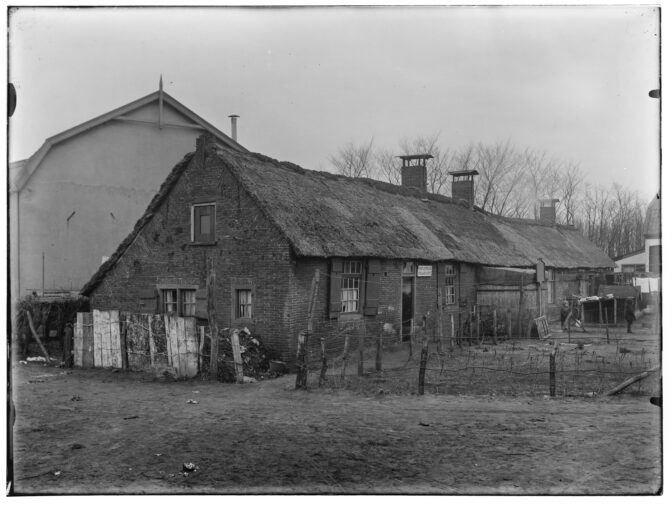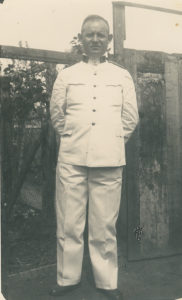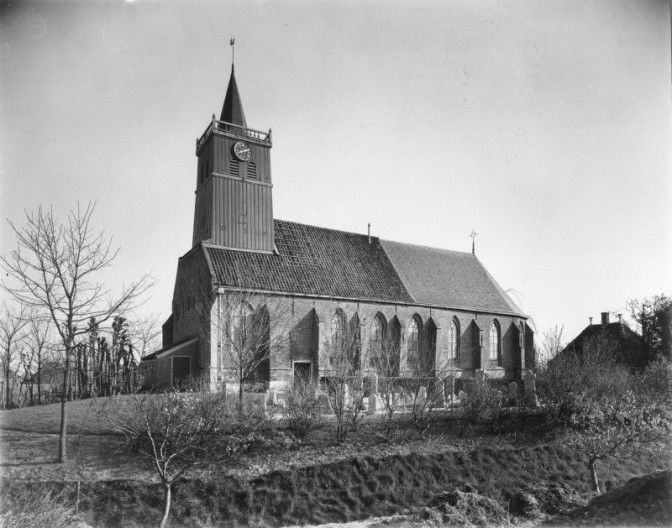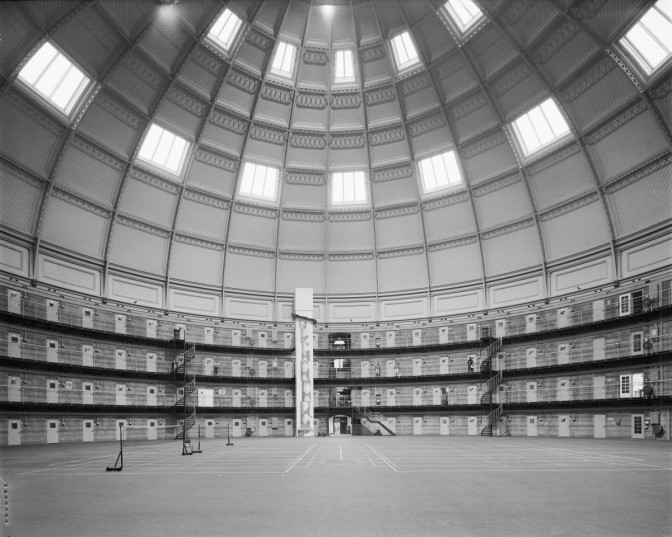A few months ago, I issued my Level-Up Challenge, challenging you to assess how complete your research is. By level 2, we know the names of our ancestors and where and when they were born, married and died and by level 3, we also have to know their occupations, places of residence, and their children and spouses. To reach level 4, we also need to know what property they owned, if they served in the military, what religion they were, and if they were involved in any criminal activities.
In this blog post, I will explain which sources I feel I need to have found or searched for in order to say I have reached level 4.
Property ownership
I want to know if my ancestors owned property, and if so I want to know the location, and whether the house still exists. Here are the sources that I consult:
- Cadastral records (since 1832)
I use original indicator tables to see if my ancestors owned property in 1832. I use article-based ledgers to see if my ancestors owned property since 1832. These ledgers are available via Mijn Kadaster but require a subscription and are cumbersome to use, even if you know Dutch. - Death duties files (1806-1928)
If people died in this period, a death duties file showed what real estate they left and who the heirs were. - Notarial records
Notarial records record transactions of property, such as purchases, sales, and estate divisions. Notarial records are available for the whole country since 1811 and for some parts of the country before that. Before 1811, such records can be found in local court records if there was no notary. - Real estate tax records
Some real estate taxes were charged to the owner. I use these records especially before 1811, when other records are in short supply.

Unlivable houses in Amsterdam, 1924. Credits: Stadsarchief Amsterdam (public domain)
Military service
If my ancestors were in the military, I want to know about it. I want to know the regiment they served in, their rank, how long they served, where they served, and if they were involved in any campaigns. Depending on the period, records with these details may or may not have survived.
Mandatory military service was first introduced during the French occupation in 1810 and existed until the 1990s, when it was suspended. For men born after 1790, I try to find out whether they served in the military. Women have never been required to serve in the army, though in the late 1900s it became more common for women to join the army as employees.

Jan Trouw in his Dutch East Indies Army uniform. Personal collection (orphaned work)
Records I use to find out if my ancestors served include:
- Marriage supplements (since 1811)
The marriage supplements are the documents a bride and groom had to submit to prove their eligibility to get married. They can be found on FamilySearch (search > catalog > place name > civil registration) or on some websites of Dutch archives. The supplements should include a certificate of the National Militia that explains how a groom fulfilled his duties to serve in the military. The most common ways are by serving, by exemption, or by hiring a replacement. If a groom served, the certificate will often give the regiment number. - Municipal enlistment or lottery registers (since 1810)
I use these if the marriage supplements indicate that a groom served but did not give a the regiment. In that case, I look at the registration records for the year the groom turned 19 in the place where he lived (or whichever time and place was indicated on the National Militia certificate) and check if that said which regiment the man was assigned to. - Muster rolls (since 1810)
The muster rolls are kept at the National Archives and have been digitized, including contemporary indexes per regiment. For soldiers and petty officers, the scans can be consulted via the finding aid. I first look up the name in the contemporary index of the regiment, which gives the muster roll number, and then look up the entry for the soldier on the muster roll. This will give details about the soldier’s service, including any campaigns he was involved in. - Military service record (since 1927)
For people who served after 1927, you can order their military service record from the Department of Defense (Dutch form). This can only be done with proof of death or by the person themselves. - Indexes at National Archives
The National Archives has several indexes for military records, including soldiers who served in the Royal Dutch East Indies Army, officers in the Dutch army, and people who served during the French period.
For ancestors who served prior to 1811, marriage records are often the first clue they were in the military. For soldiers, marriage records often gave the details of where they served. The indexes of the National Archives sometimes have information about the officers. Tracing the officers may help to find out where the regiment was stationed previously and can be a clue to find out where ancestors came from.
Religion
To find out what religion my ancestors had, I use the following records:
- Church membership records
Church membership records offer the strongest proof of religion. They can tell when a person joined a church. If they moved, they can say where they came from or where they went. If church membership records are not available, I will check church council minutes to see if new members were recorded there, of if my ancestor was ever mentioned in the minutes. - Baptismal records
Baptismal records will tell where an ancestor was baptized and where they had their children baptized. - Marriage records
Before 1811, only marriages before the Dutch Reformed Church or Aldermen’s Court were recognized by the civil authorities. If a couple was found marrying in another church, that is a strong indication they belonged to that church. If they married in a Dutch Reformed Church, that does not mean they were Dutch Reformed. Baptismal records of children should be consulted since there was no civil requirement to baptize children in a different church. - Population registers (since 1850)
Population registers list the religion of the person. In the 1800s, there were quite a few splits in the Dutch Reformed Church, so this register can help to discover if ancestors joined another church later in life. This can then be a trigger to look at those church membership records.

Dutch Reformed Church in Lambertschaag, Noord-Holland. Image credits: Rijksdienst voor het Cultureel Erfgoed (CC-BY-SA)
Criminal activity
If my ancestors were ever convicted of a crime or sent to prison, I want to know about it. Here are some of the sources I use:
- Criminal court records
Criminal court records often contain the trial records as well as the verdict. These can give great insights into the lives of our ancestors. - Prison records
Prison became a common sentence in the 1800s. Prison records are increasingly being scanned and indexed. They refer to the sentence and can be a great way to discover criminal court records. - Police records
Police records sometimes survive for the 1800s and 1900s. They are often not online and unindexed, but some archives have scanned and indexed the World War II records. They can provide great insights into what was going on. I love going through these records, especially those of small towns where the chance of finding my ancestor is larger. - Newspapers
Sometimes, criminals were mentioned by their full name in newspapers. Since so many newspapers are now online at Delpher, this is an easy thing to check.

Dome prison in Breda. Credits: Cultural Heritage Service


Hoi Yvette,
Zijn de contemporary indexes die je noemt bij de muster rolls dezelfde als die bij de link Indexes for military records naar voren komen? Of zijn ze ergens anders op de website van het Nationaal Archief te raadplegen?
Alvast dank voor je hulp.
Mvrgr,
Sieger Witvoet
De eigentijdse indexen zijn de gescande namenlijsten per regiment die in de inventaris te vinden zijn bij de stamboeken van dat regiment.
My husbands Fohr ancestors research goes back to 1600’s. All documented by others so has been a joy researching his side. We only found the Fohr side last year. There is the Fohr brewery and Fohr pottery as well
Yvette,
Thank you so much for your blog and your level up challenge. It’s been great getting to know my ancestors better.
I believe you had mentioned once that you have ancestors from Scotland that were serving in the Netherlands. I believe I might have a similar situation on one of my lines. My ancestors Hendrik van Oor married an Anna Harrington 8 May 1639 in Bergen op Zoom. I believe Anna’s family is a Francois (Frances) Harrington listed as a witness in her oldest child’s christening. This same Francois (Franchois Hamington) is listed in a notary document 29 Aug 1636 in Bergen op Zoom as a Lieutenant under Clercq. I believe he was an English soldier serving in the Netherlands at the end of the eighty years war. Are there any military records I might search to find out more about him and his service.
Sincerly,
Matt Newbold